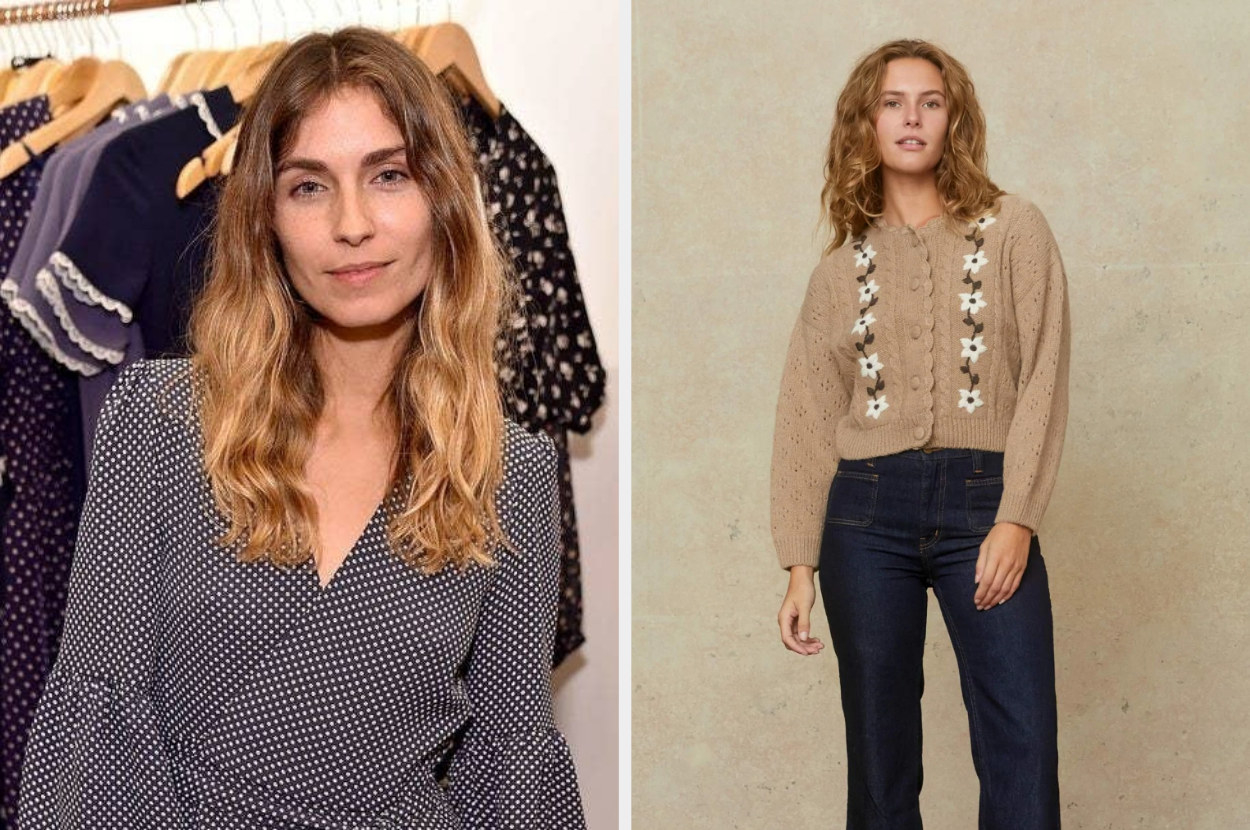“The factories that I work with are both really small and women-run, and I love working in India because I source a lot of the fabrics there,” Tyler said. “The factories I work with also have an emphasis on sustainability.” She additionally discussed how the eponymous company will approach sustainability looking ahead, saying, “My brand is trying to shift towards making pieces that will last for a long time. We’ve also been thinking about making our packaging fully recyclable and making sure that when we cut our patterns there is no waste. We are also working with my friend who does natural dying to come up with a color we can use for next season.” “As an industry, we have to measure our environmental footprint, and at Stella, our goal is to reduce that footprint, not to replace it,” Stella said. “In order to be truly sustainable in any business, your model has to have self-imposed limitations. We aren’t perfect by any means and we are always looking to improve our means of sourcing. Right now, for example, we are running regenerative farming pilot tests.” “On a sustainability level, we have monthly action plan meetings to talk over how much energy we use in the office, our recycling initiatives, any workshops we can do or films we can watch to learn more about how we work and how we can work better,” Mara said in a past interview with Rêve En Vert. “For me, it’s important that our sustainability is all about developing everything by hand and going back to artisan practices, rather than having machines everywhere,” Alejandra told the Frontlash in a past interview. As of 2019, the brand is plastic-free, and the next aim Gabriela has set for her company is to forgo the use of virgin materials. “I want to be a part of this revolution. We are trying to make sure all of the fabrics we source are ethical and environmentally friendly,” Morgane told Wardrobe Icons before adding, “At the beginning everyone was afraid, they said it wasn’t possible, but I was convinced it was. For me, it was an absolute priority.” “The business was founded on the principles of transparency; ingenuity; and environmental, economic, and social sustainability,” Alexandra said to World Wide Generation. “We started small, allowing us to control every step of the production cycle and have complete oversight of our environmental and social impact each step of the way.” “[An ongoing goal of mine] is to learn about all aspects of sustainability within fashion, and ensure as a brand that we are always exploring the best sustainable options for fabric bases, trims and printing techniques,” Emma said. “It’s something that changes all the time but it’s so important to keep evolving with it.” “You can’t forget the people who make the clothes,” Teodora said to Drapers in 2021. “A lot of brands out there claim to be sustainable as they’re using sustainable fabrics, but it’s about the people who work for the brands, too. We have transparency in our production.” “I want to show people that sustainable fashion isn’t just about organic linen, but it can also be a beautifully beaded dress,” Kevin told Tatler Asia in 2019. “I think to not work sustainably in some way in the 21st century is highly dismissive of the current state of the world,” Conner said to Tatler Asia in 2022. “I only do what I do [design] because of the way in which we do it [ie upcycling]; I wouldn’t be making clothes if I wasn’t making them from other things.” “We started with our manufacturing, went on to packaging, then moved on to looking at fabrics," Misha said. “We are now looking across our entire supply chain and our processes.” “With Christy Dawn, we try to optimize for longevity, and we don’t limit ‘sustainability’ to solely environmental considerations. We look at the human impact of what we are doing,” Christy told the Good Trade.
















